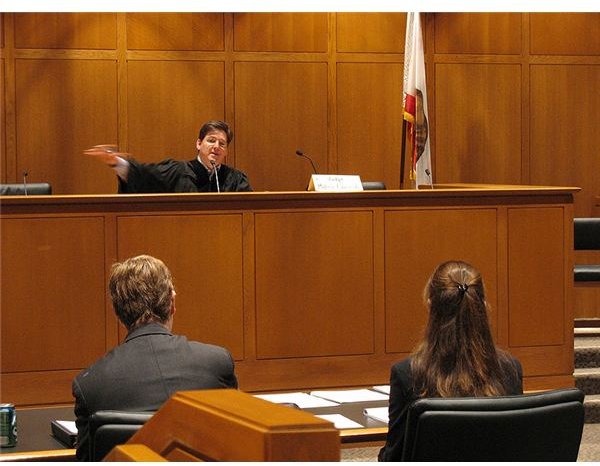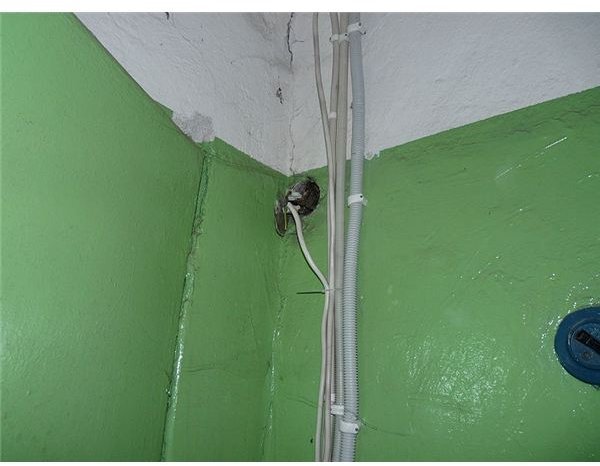Fundamental Procedures on How to Set Up Renter's Escrow Accounts
The Importance of Knowing the State Rental Laws
Landlord and tenant disputes are common and often inevitable; hence, many tenants are seeking information on how to set up renter’s escrow accounts. Different US states have different rental laws. Tenants, who intend to make use of escrow in taking actions against their landlords, should first know the applicable procedures prescribed by the state, which has jurisdiction over their rental issues.
Renters seeking information about the state requirements and procedures for opening an escrow account may refer to this resource page: “Landlord Tenant Law ~ State by State Rights of Landlords and Tenants”.
Basic Information About Different US Rental Laws for Opening of Renter’s Escrow Account

Generally, most US states require the renter to file for an application to seek a court hearing for a court administered escrow account.
-
Said hearings include the court’s determination if the renter’s reason for opening an escrow deposit account arises from the landlord’s failure to comply with rental laws or to maintain the unit safe and habitable in accordance with the state’s housing or building code or other similar requirements.
-
The landlord’s side will also be heard in order to arrive at a fair decision whether there is indeed grave failure on his part.
-
The state of California does not require a court application for setting up a deposit account for rent payments withheld. However, legal experts in this state recommend that renters with valid reasons to do so, should open an escrow account with a licensed service provider.
-
Other states, however, make no mention of escrow as a tenant’s remedy in settling a dispute. In line with this, most attorneys’ advice to renters is to safekeep the intended rent payments by depositing the same under a bank fiduciary account, naming the landlord as beneficiary. This is to show proof that the renter has sufficient funds to pay for the rent obligation and has genuine intentions to pay the rent.
-
Bank escrow under a fiduciary account is one of the renter’s remedies, in order to enforce his rights.
What is a Fiduciary Account?
A fiduciary account is a special bank savings account which may be opened by:
- A court-appointed trustee;
- A licensed escrow service provider;
- An estate administrator;
- A traditional trustee; or
- Any individual; all for the purpose of safekeeping or managing the funds of a specific beneficiary.
Escrow deposits under a fiduciary bank account do not enjoy the same protection as a regular fiduciary account. They do not have the same treatment as the traditional fiduciary deposits, which are exempt from seizure laws in cases of bankruptcy.
Nevertheless, since escrow accounts serve as instrumentations to guarantee a business transaction, there is more flexibility in its withdrawal and disposition.
Requirements of a Court Administered Escrow Account
-
There should be proof that the tenant or renter notified the landlord about the defects in dispute.
-
The landlord has been given reasonable time from date of notice to perform the necessary repairs or structural remedies. His inaction or ineffectiveness of the repairs he instituted, gave rise to the renter’s course of action to withhold payment.
-
Reasonable time will depend on the type of repair to be addressed and an independent contractor’s opinion may be sought to determine the length of a “reasonable time."
-
The renter, his family member, his guests and/or his pet were in no way responsible for the damage or defect in contention.
Procedures and Examples of Valid Reasons for Opening an Escrow Account

(1) The courts are very particular regarding the reasons for resorting to escrow, as a remedy in settling disputes between landlords and tenants. The following are only examples of these valid reasons and are not limited to:
-
Structural defects in the unit or building that pose certain threats to the health and safety of the tenant. The court further requires that the renter’s notice should be in writing and via certified mail. In addition, the local government authority must have been notified and that a local government unit will acknowledge the existence of the threat to safety by serving a notice of violation to the landlord.
-
The defects in the unit are serious enough to render the unit as uninhabitable for human use.
-
Issues such as lack of heat, electricity and water are recognized only if said utilities were not cut-off due to the renter’s inability or negligence to pay for their corresponding usages.
-
There is lack of sewage disposal facilities to provide proper sanitation.
-
The presence of fire hazards for which the local fire department has been notified, who will in turn confirm the existence of threat by serving the landlord a notice of violation.
-
Failure to reduce lead paint hazards which should likewise be confirmed by the local housing authority through a violation notice served to the landlord.

(2) If the property rented is managed by property administrators or managers, they shall be construed as the landlord’s legal extensions and notices and proofs that these had been sent to and received by them will suffice.
(3) Upon court hearing to open an escrow account, the renter will be asked to bring all the previous receipts as proof of the renter’s diligence in paying his monthly rent obligations.
(4) If the court finds that the renter’s reasons are not included among those prescribed by law or are not serious enough to pose threat to health and safety, the court will allow the landlord to serve the renter a notice of eviction. This is one of the reasons why checking out the state laws is a must.
(5) However, the landlord still has to go through proper court procedures to evict the tenant by showing proof that the notice of eviction was served accordingly, i.e. reasonable time, return of deposit and the like.
(6) If the tenant wins and the landlord is directed by the court to comply with the necessary repairs, the rent payment withheld will be deposited to a court-appointed trustee to provide the escrow service until such time that the repairs have been completed.
Escrow Account as the Landlord’s Tool
-
As a general rule, the renter’s security deposit is not allowed to be applied as payment for rent.
-
They will be reserved exclusively as funds to cover costs of potential damages that the tenant may cause.
-
The landlord is required to place the security deposit under bank escrow and specific rates of interests earned will inure to the renter if the amount of the escrowed deposit is $ 50 and above.
-
The landlord is prohibited from co-mingling the security deposits of the renters or with his personal account.
These are now the basic information that the tenant should know in knowing how to set up escrow accounts for renters.
Reference Materials and Image Credits
References:
- https://www.dmaa.net/LegisationFiles/Court_rules%20_on_summary_proceedings.pdf
- https://www.docstoc.com/docs/14716136/Maryland-Rental-Law
- https://www.cityofdefiance.com/courts/courtrules.pdf ohio
- https://www.dca.ca.gov/publications/landlordbook/repairs.shtml
- https://www.bankmillennium.pl/en/corporate/everyday-service/accounts/fiduciary-and-escrow-account/
Image Credits:
- https://commons.wikimedia.org/wiki/File:E8565-Almaty-1960s-apt-block.jpg
- https://commons.wikimedia.org/wiki/File:American_judge.jpg
- https://commons.wikimedia.org/wiki/File:Paint_peeling_off_in_Oulu_Jan2009.jpg
- https://commons.wikimedia.org/wiki/File:Electric_cables_in_old_apartment_building.JPG
This post is part of the series: What is Escrow –Its Concept and Its Uses?
Understand the concept of escrow from its very origins through its transformation into becoming one of today’s important business tools. This series provides basic information for opening an escrow account as well as furnish answers to queries about renter’s and mortgage escrows.
